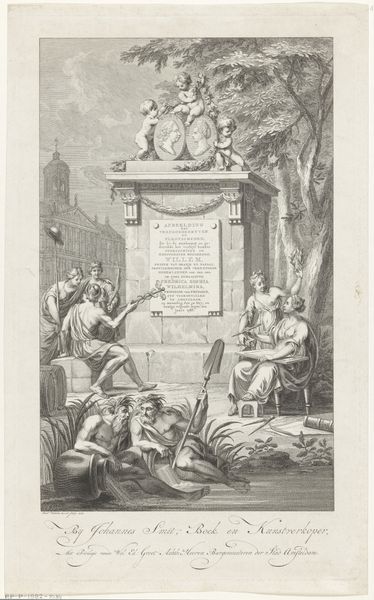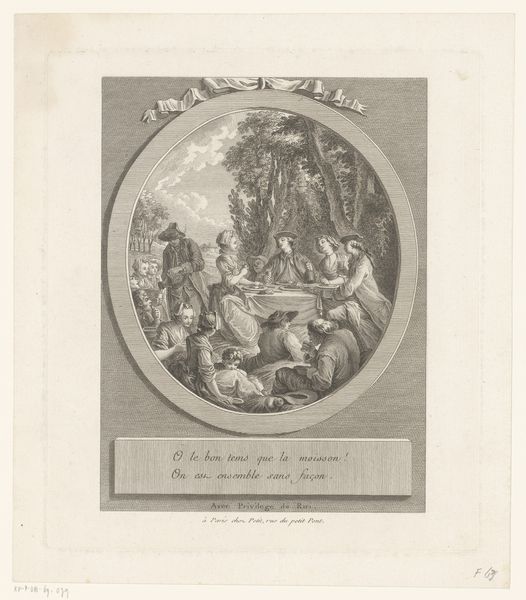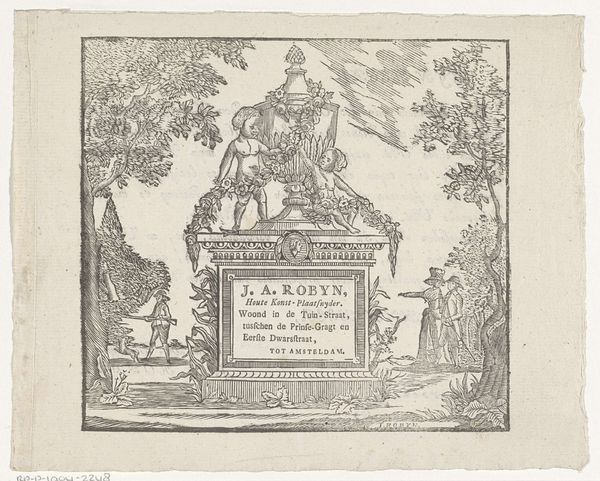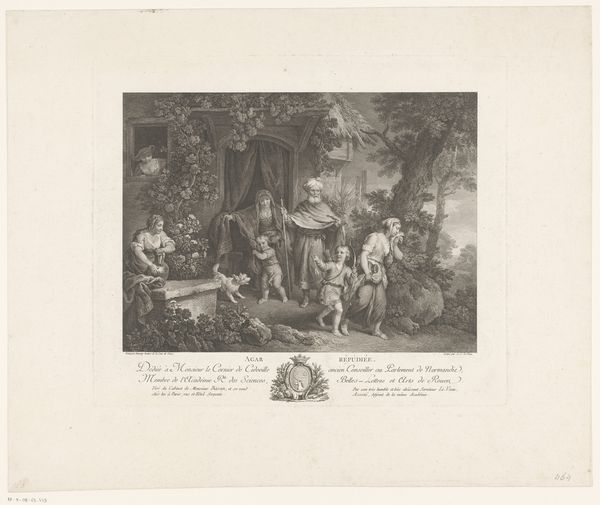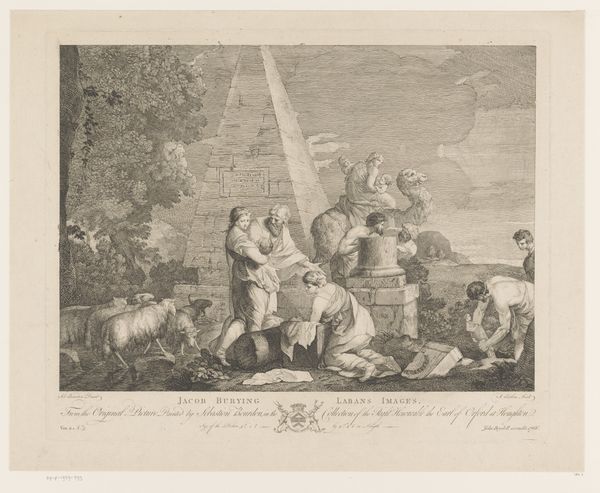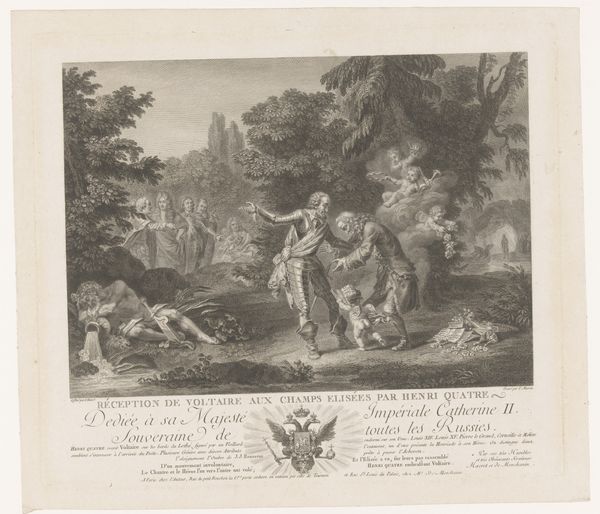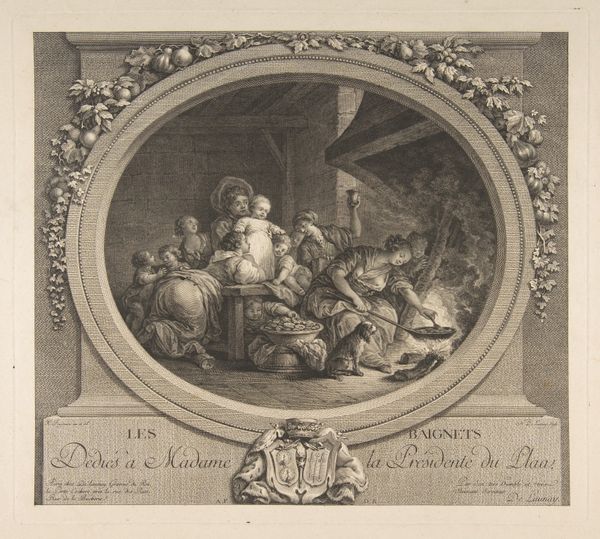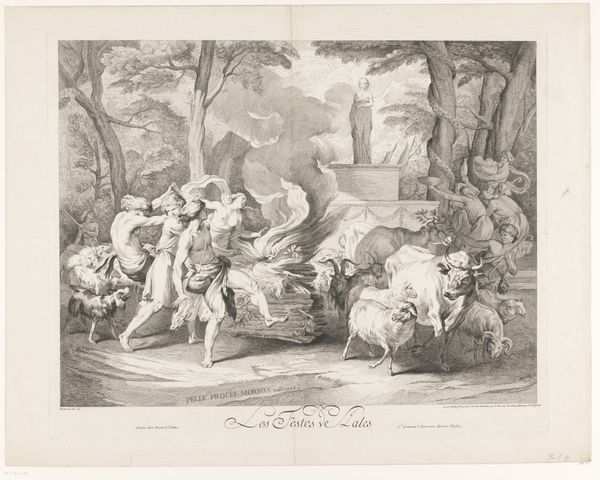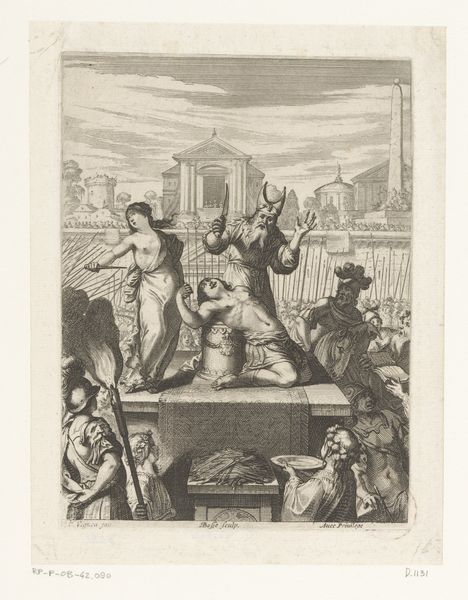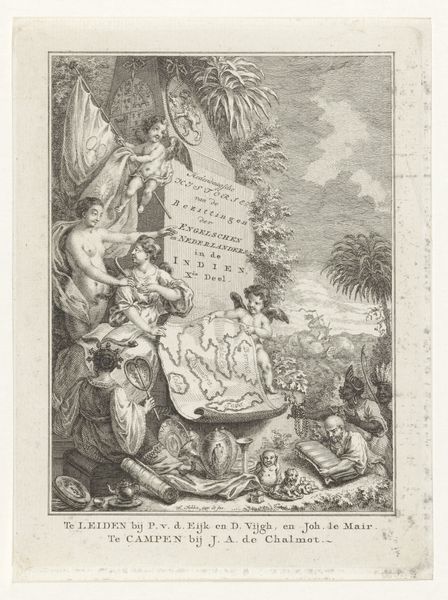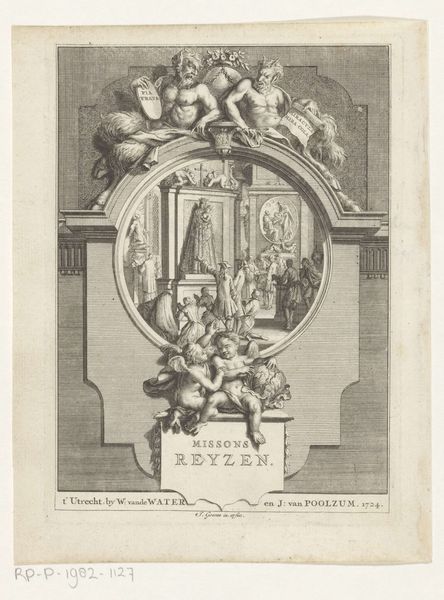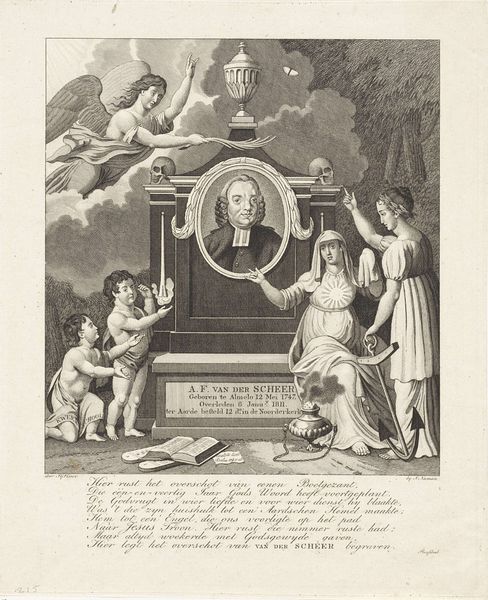
print, engraving
#
portrait
#
baroque
# print
#
old engraving style
#
figuration
#
history-painting
#
engraving
Dimensions: height 352 mm, width 390 mm
Copyright: Rijks Museum: Open Domain
Curator: Anton Tischler's engraving, Figuren bij een grafmonument, dating from around 1731-1780, offers an intricate example of 18th-century printmaking, currently housed in the Rijksmuseum. The composition is centered around a classical monument with figures gathered in mourning. Editor: Immediately, I feel a sense of theatrical grief, almost staged. The dramatic lighting and classical drapery amplify the emotion, but it’s distant, you know? Like a play you're watching. What strikes me is how the very materiality of this print, with its delicate etched lines, renders something so grand and mournful…manageable? Curator: Precisely. Consider the labor involved in creating this image. An engraving of this scale required skilled artisans capable of translating pictorial ideas into meticulous lines, etching plates, and mass-producing copies. The print functioned as a reproducible object. It disseminates the original image beyond the elite, which could contribute to the commodification of grief itself. Editor: Ah, I get that! So it's about mass production as well? Turning grief into a souvenir of sorts, literally, based on what is written down on the image’s very bottom... Makes one think, doesn’t it? And what about the depiction? It has got everything! The water, the lion… even the architectural framework seems burdened! But is it just decorative excess, or are there hidden meanings there? Curator: There's a lot of artistic license at play, layering symbols and cultural markers! It's difficult to isolate any "true" reading of such visual languages, which may mean different things at different points of this engraving's lifecycle as it reached different consumers with their unique social status. Editor: It’s wild to think how this was consumed. I'm sort of wondering what Tischler truly felt while crafting those lines...it seems detached but meticulous. Almost clinical, maybe? I am definitely bringing those ideas on with me! Curator: And that is the beauty and the paradox. Through this piece, which is now itself history, we come closer to how the social experience of memory has its own form, affected, changed, even commodified by art production itself.
Comments
No comments
Be the first to comment and join the conversation on the ultimate creative platform.
